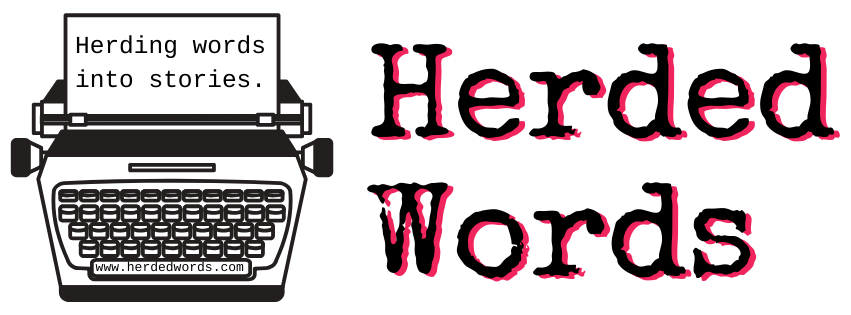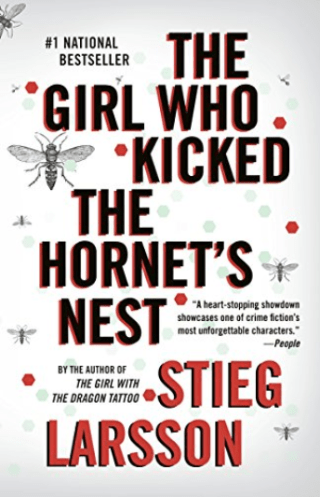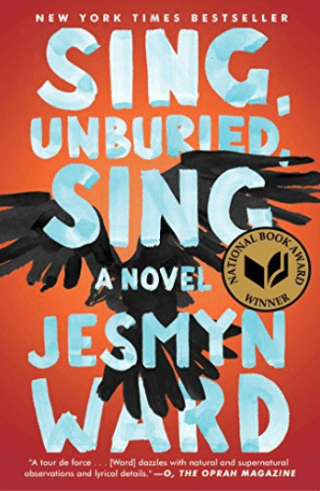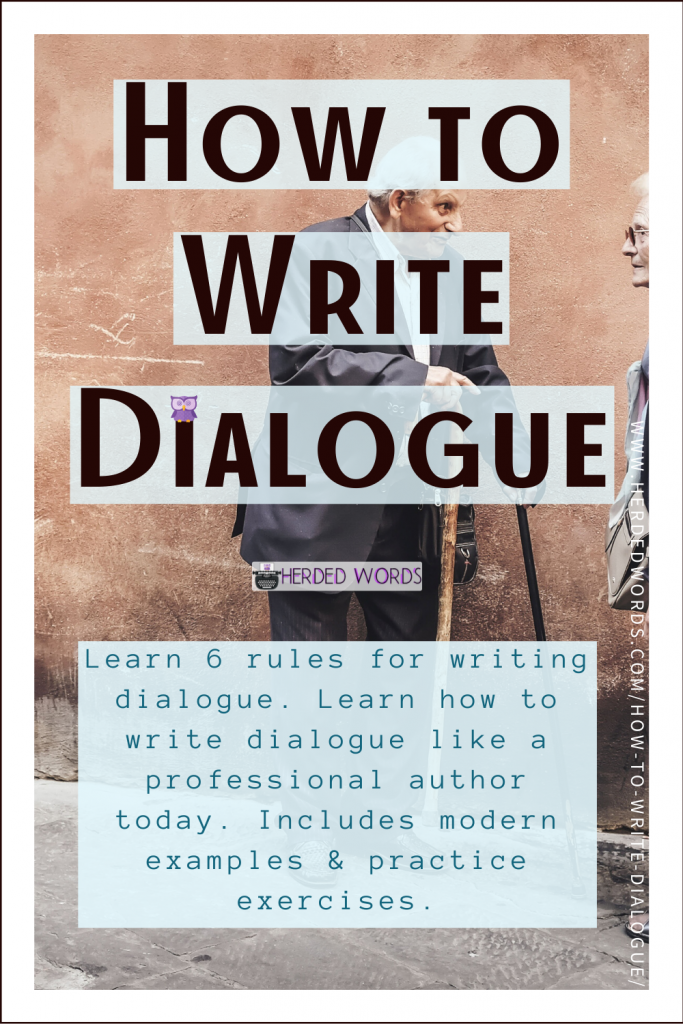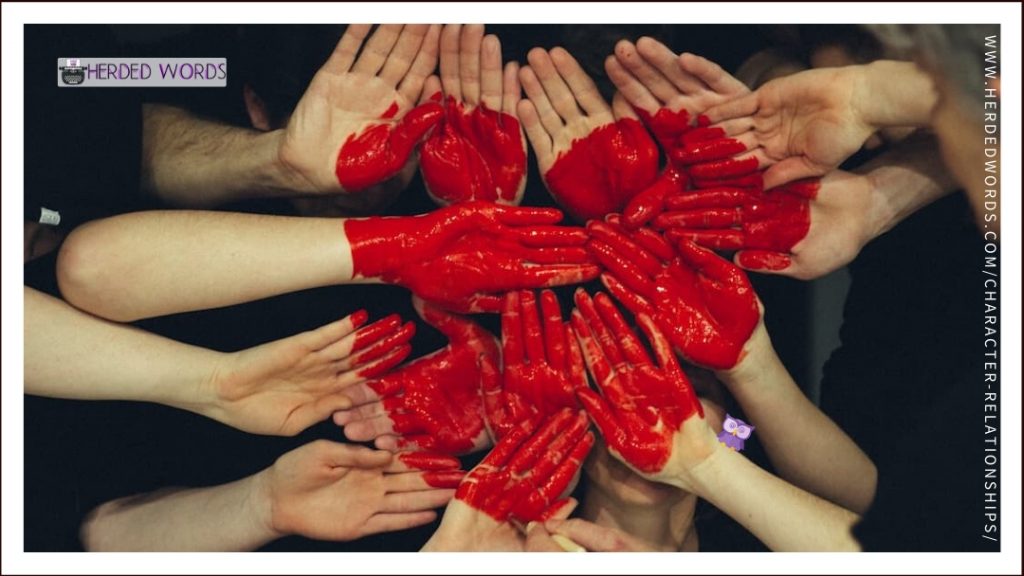
Listen to this post
Herdedwords.com uses affiliate links. This means we receive a commission on the sale of certain items. This is at NO additional cost to you. Visit the policies page to learn more.
They say that art imitates life – and that’s especially true for character relationships.
Character relationships are often the driving force of any novel. Learn about the types of relationships and get tips to write excellent character relationships in your novel!
Table of Contents
Types of Relationships
There are 8 groups of relationship types. A novel needs them all. Everyone needs them all. Make sure your main characters types are fully developed with a variety of relationship types! This is crucial for your main character, but should also be done for other major characters (like your antagonist).
Self
Your characters will have relationships with themselves. That relationship follows the same principles as a relationship with another person would. It will be complicated, it will change over time, and it will be unique from the other relationships in their life.
Relationships with self can be positive, negative, or a mixture of both.
Acquaintances
An acquaintance is a person who isn’t quite a friend. You know them, but not well.
People can grow apart or closer, therefore, acquaintances can become friends and friends become acquaintances.
Colleagues
Colleagues are people who work together. These relationships can be full of conflict and drama.
Sometimes colleagues can become friends outside of work. In these instances, they’d be considered friends (and colleagues).
Enemies
Not all enemies are evil. Not all enemies are even bad. Some enemies are enemies for the stupidest of reasons. What are enemies then? They’re just people that are also in conflict with one another.
Enemies are a category of relationships that don’t need to be human. Maybe the enemy relationship of your novel involves technology or the weather.
My uncle is a farmer. The weather is both his best friend and his worst enemy. They’re frenemies – another class of enemies.
Family
It might seem obvious that there are different familial relationships a character can have (mother, father, daughter, son, sister, brother, aunt, cousin, etc). What’s often harder for authors to establish is the power dynamic between family members.
Typically, an older family member will hold some form of power or authority over younger members. Even adult children are more likely to defer to a parent than another adult of equal age to their parent.
If the power dynamics are atypical (and they can be), the author needs to clearly demonstrate why.
Friends
There’s no limit on the number of friends that a character can have. But each friend needs to be unique.
Furthermore, friends don’t need to be human. A pet can play a crucial role in a novel as the protagonists’ friend.
Lovers
There are many different kinds of lovers a character can have. A casual lover, an unrequited love, a long-term partner, an affair, a one-night stand, etc.,
Each type of relationship has its own characteristics. Your character can have zero, one, two, ten, or more lovers in a novel. Sometimes a character doesn’t know what type of lover they have – or they think they know, but they’re wrong.
Lovers are an excellent relationship to use to add conflict, tension, and drama to a novel.
Other Relationships
There are definitely other types of relationships that don’t fit into the above categories.
A couple of examples of real-life relationships that don’t fit into the categories above:
Hair Stylists – My stylist likes to talk while she works. I know a lot about her and she knows a lot about me. We see each other every couple of months and share personal details of our lives. But we’re not friends. I never see her outside the salon.
Coffee Shop Staff – As someone who’s self-employed, I spend a lot of time in coffee shops. Most of the staff at most of the coffee shops in my area know me. Our relationships are similar to acquaintances but different. The differences lie in the service factor and the frequency with which I see them.
There are many, many more relationship types. Every relationship is different. Look around you for inspiration!
Tip for Crafting Believable Relationships
Here are three tips to master relationships in your novel.
#1 – Relationships are Complicated
Relationships are far from simple. The people in your life are not perfect and you’re not oblivious to their flaws. Sometimes, they’ll disappoint you or hurt you. But the people in your life also have strengths and sometimes they’ll help you or impress you.
The way character traits interact with other people’s character traits is what prevents relationships from being simple. It causes complications.
If all the relationships in your novel are simple or easy, they won’t feel real. Readers won’t care about them.
#2 – Relationships Change Over Time
People grow closer, people grow further apart. They love. They hate. Your characters should represent this reality.
As life changes, so will relationships. Here are some examples:
- Getting a new job can result in a weaker relationship with your colleagues/friends from your old job.
- Having a child can mean less free time to spend with your friends/family/relationships.
- Moving to a new city will involve making new relationships – and the distance from your old ones will result in changes.
#3 – Unique Relationship Dynamics
Every relationship has its own set of unique dynamics. Your character might have two BFFs (best friends forever) but the relationship with each will be different. Some relationships will be (mostly) positive – full of love, respect, loyalty, etc., And other relationships will be (mostly) negative – full of friction, disappointment, tension, etc.,
The *mostly* in each of these is important because sometimes we’ll have negative experiences with the people we love and sometimes we’ll have positive experiences with the people we dislike.
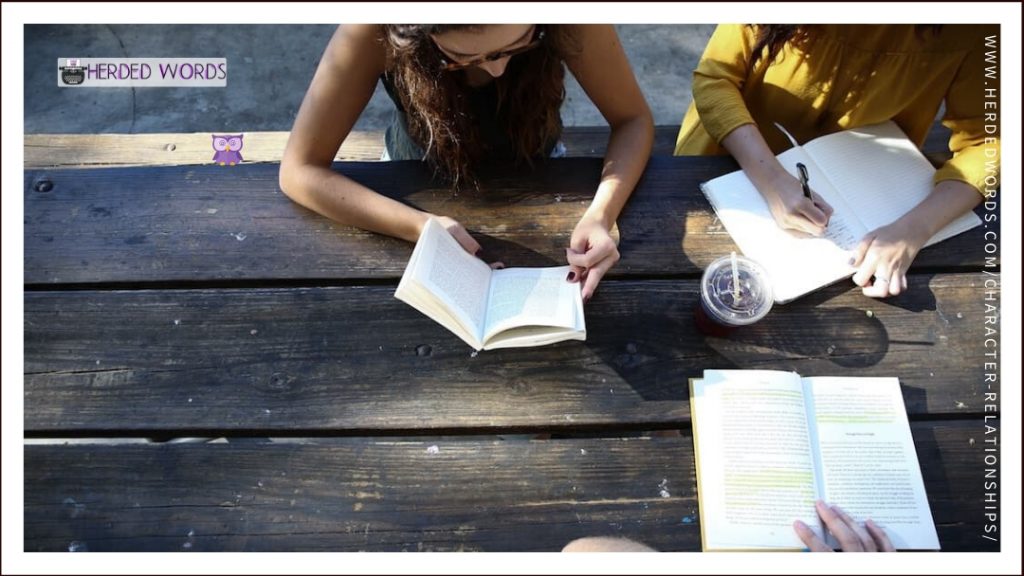
Relationship Examples from Bestselling & Award-Winning Fiction
Let’s examine some character relationships from bestselling and award-winning novels.
THE GIRL WHO KICKED THE HORNET’S NEST
THE GIRL WHO KICKED THE HORNETS’ NEST, published in 2010 is a mystery, thriller & suspense novel by Stieg Larsson. It’s book 3 in the Millennium series.
THE GIRL WHO KICKED THE HORNETS’ NEST spent 9 weeks at #1 on the NYT Bestseller List. The Swedish version of the movie was released in 2009. The US version of the movie is not yet complete.
In-Depth Example: Lisbeth Salander & Mikael Blomkvist
This is the biggest relationship of the series: the protagonist and sidekick. It’s difficult to analyze based solely on the last novel because so much development takes place in the earlier books.
Lisbeth is a loner and trusting someone doesn’t come easily to her. This makes it difficult for anyone to have a relationship with her.
Mikael initially is interested not in friendship but a working relationship. As Mikael begins to care about Lisbeth, their relationship becomes more difficult.
In the final book, Mikael is willing to do whatever it takes to save Lisbeth. In turn, Lisbeth learns to truly trust Mikael.
Lisbeth & Mikael are completely different people, which makes their relationship fraught with difficulties. But it works, for them.
SING, UNBURIED, SING
SING, UNBURIED, SING, published in 2017, is a fiction novel by Jesmyn Ward.
SING, UNBURIED, SING won the 2017 National Book Award for Fiction.
In-Depth Example: Jojo & Leonie
Jojo is a child. Leonie is Jojo’s mother but she rarely acts like it. She’s a selfish, neglectful, drug addict.
Jojo has had to grow up a lot faster than a 13-year-old should. This causes a lot of tension and difficulty between Jojo & Leonie.
Jojo & Leonie’s relationship starts poorly in the novel and it does not improve. Leonie proves time and again that she is not an adequate parent.
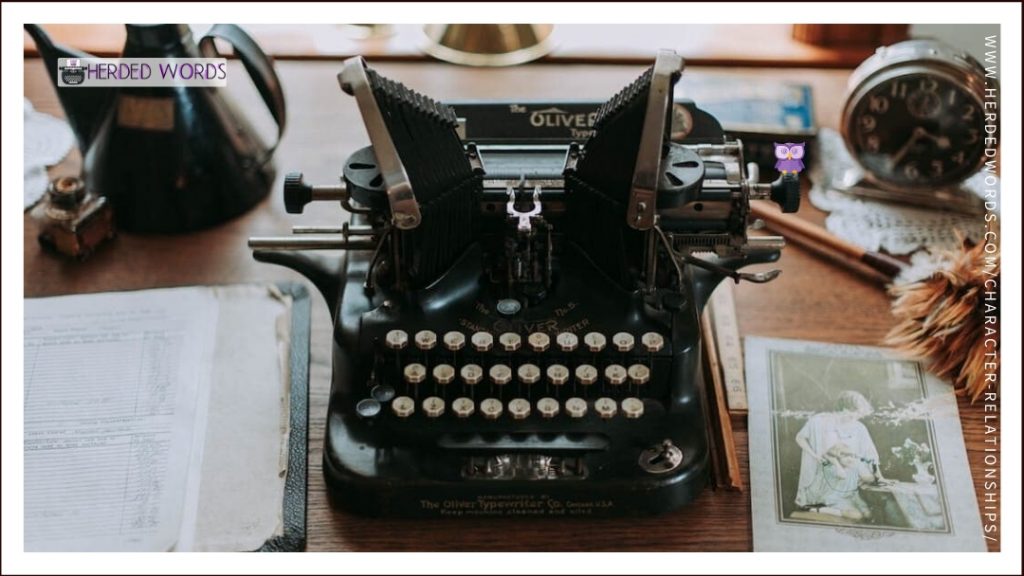
Writing Prompts & Exercises for Character Relationships
It’s that time of day again: time to PRACTICE. Do these exercises and prompts and you’ll be a master of character relationships in no time!
Exercise: Analyze More Novels
Every genre will be a little different. Choose some of your favorite novels and some novels in the genre you want to write in (if they’re different). Analyze the character relationships of each novel.
- Fill out the chart or google doc for the primary characters of each novel.
- Choose at least one relationship and answer the following questions.
- What complications happen in the relationship?
- How does the relationship change over time?
- What makes the relationship unique?
Exercise: Adapt LITTLE RED
There aren’t a lot of characters in LITTLE RED-CAP. Add a new character (or two) and explain their relationship to RED.
Your task: Write a new scene of at least 400 words showing the relationship you created.
Prompt:
She had been called many things in her life, mostly negative. Now, she would be called Her Majesty.
Your task: Write a scene of at least 400 words showing a relationship (don’t do a love scene, that’s a whole post of its own).
Fun Notebooks to Practice In
I like to keep a notebook with me all the time so I can write down ideas as they come to me. I’ll also jot in a few prompts and exercises I can work on. Check out one of these fun and cheap notebooks.
Relationships Are Essential
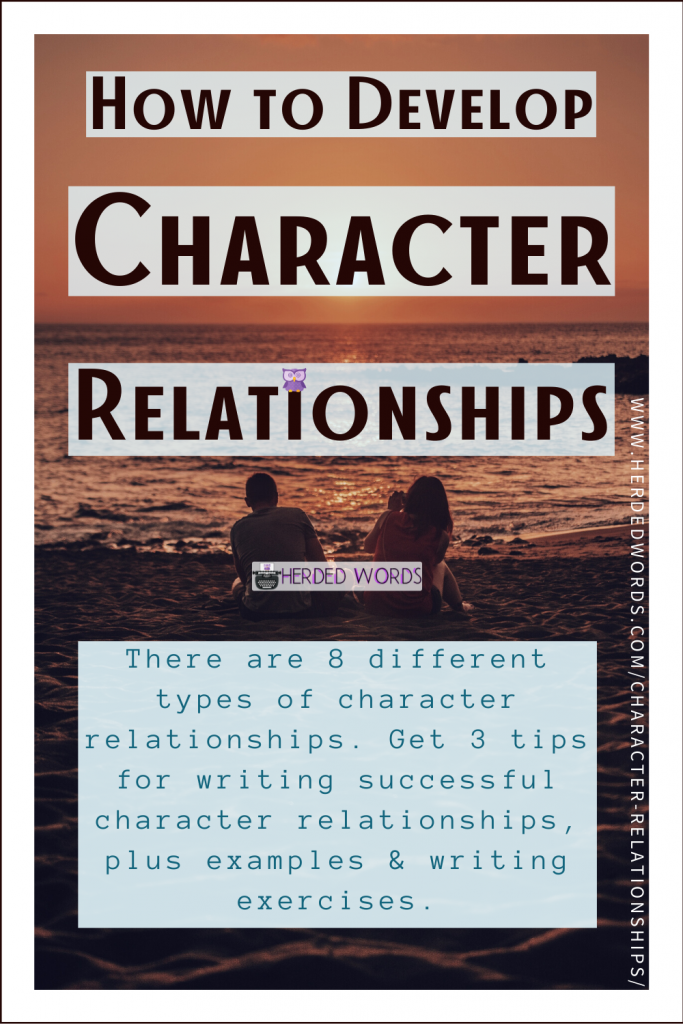
Well developed relationships are essential to a strong novel. Make sure that you follow the tips above when creating yours!
Now that you have characters and their relationships, don’t forget to have them talk to each other! Check out How to Write Dialogue next.
Like this post? Please PIN IT and follow me on social media. Thanks!
